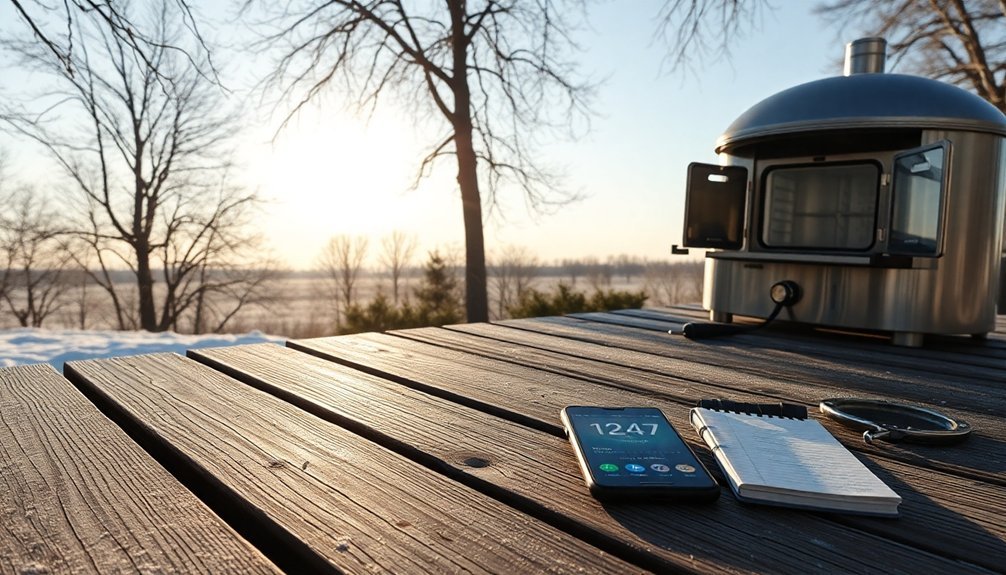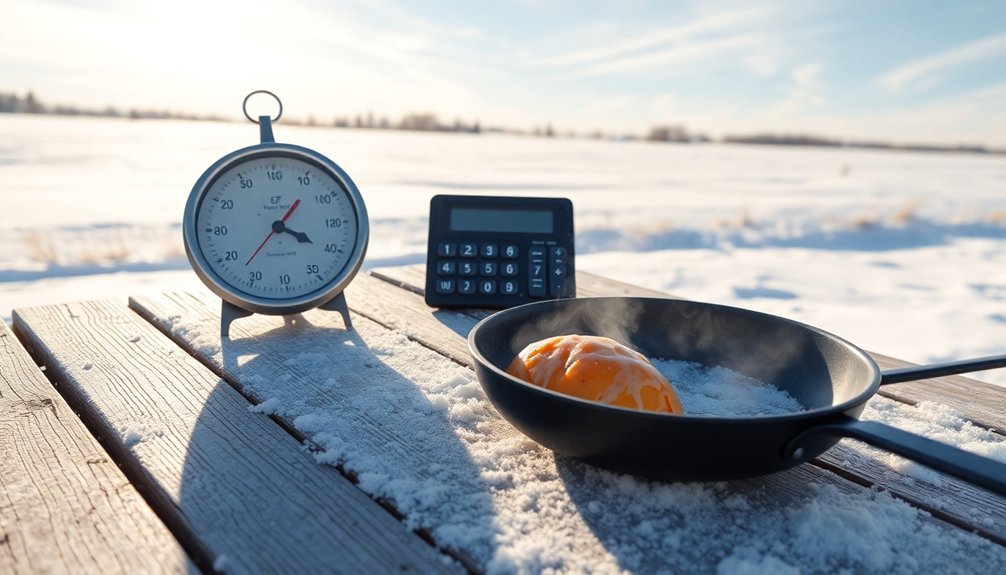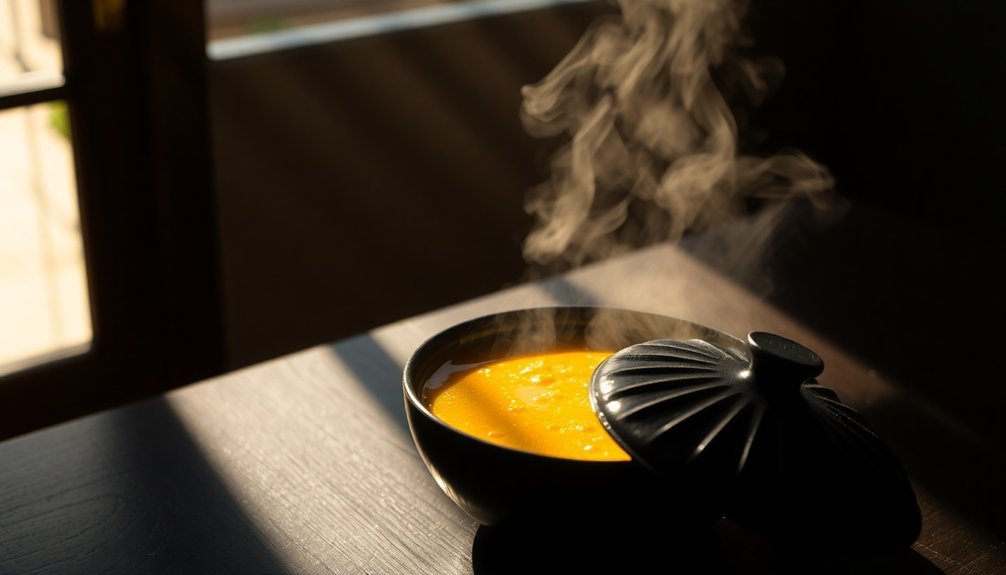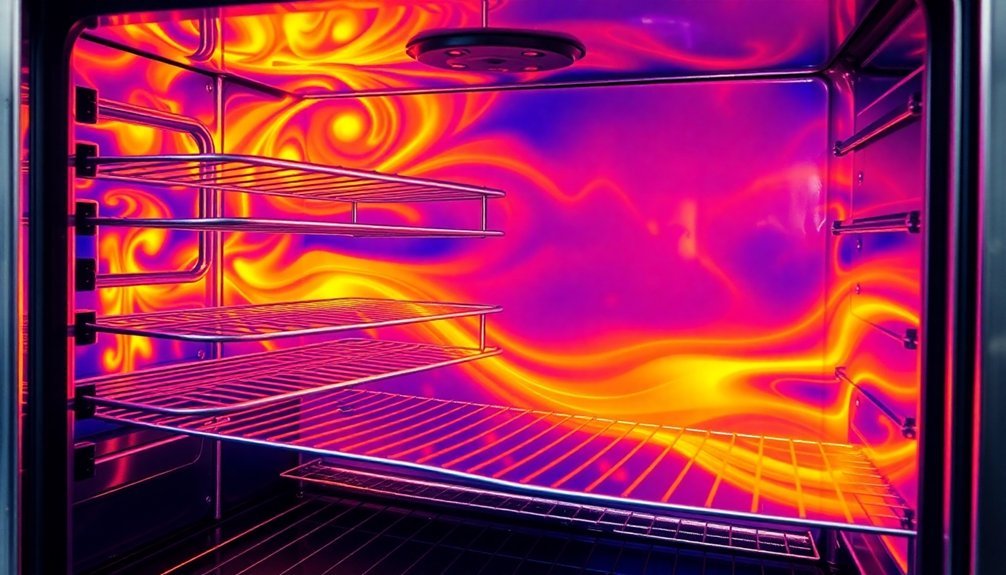You'll cut your winter solar cooking preparation time in half by knowing three essential calculation factors. First, determine your usable daylight hours, which can drop to just 9 hours in northern regions during winter. Second, factor in temperature requirements – your solar oven needs to reach at least 180°F, so add insulation like oven bags and thermal mass stones. Third, adjust for weather impacts by multiplying standard cooking times: 1.5x for partly cloudy days and 2-3x for overcast conditions. Understanding these key variables will reveal the full potential of your winter solar cooking.
Winter Sunlight Duration Adjustments

When planning winter solar cooking, you'll need to account for considerably reduced daylight hours and the sun's lower position in the sky. Your cooking times will be noticeably longer due to the sun's weaker intensity and shorter exposure periods, especially if you're in northern regions.
To adjust your cooking schedule, start early in the day to maximize available sunlight. If you're above mid-latitudes, you might only have 9 hours of usable daylight compared to 15 hours in summer.
You'll need to factor in your specific latitude, as this greatly affects sunlight duration. The winter solstice marks the shortest day, but remember that cold temperatures often persist beyond this date due to seasonal lag. Using south-facing panels can help optimize your solar cooking setup for maximum sunlight exposure during winter months.
Consider that cloud cover and local weather patterns can further reduce your effective cooking time.
Temperature and Insulation Factors
Beyond daylight hours, winter solar cooking success depends heavily on achieving and maintaining proper temperatures.
You'll need your solar oven to reach at least 180°F, though ideal cooking occurs between 250-350°F. While these temperatures are achievable even on cold days, you'll need to make key adjustments to maintain them.
To maximize heat retention, wrap your cooking vessel in a large oven roasting bag and position your cooker so the sun hits it directly at the midpoint of your cooking time. Thermal mass stones can be added inside the cooker to help maintain consistent heat levels.
You can boost performance by adding reflector panels and monitoring temperatures with an oven thermometer.
Well-insulated models like the Sun Oven and SunCook perform better in winter conditions, but you'll still need to refocus them more frequently to compensate for the sun's lower angle.
Weather Pattern Impact Calculations

To accurately calculate winter solar cooking times, you'll need to account for multiple weather patterns that can dramatically affect your cooking efficiency.
Pay attention to cloud cover, as it reduces direct sunlight and can double or triple your cooking time. Factor in humidity levels – high humidity speeds up cooking by retaining surface heat, while low humidity slows it down through faster moisture evaporation.
Watch your local wind forecast, as strong gusts can disrupt heat concentration in your solar oven. You'll also want to check the day's air pressure, especially if you're cooking at higher altitudes. Cold temperatures will make your solar cooker less efficient since cold ambient air reduces heating capabilities.
For precise timing calculations, multiply your standard cooking time by 1.5 on partly cloudy days, and by 2-3 on overcast days. During winter's peak wind conditions, add an extra 30 minutes for every 10 mph of sustained wind.
Frequently Asked Questions
Can Solar Cookers Work Effectively Through Double-Pane Glass Windows?
No, you won't get effective results using a solar cooker through double-pane windows. They block too much UV radiation and solar energy. You'll need to place your cooker outside for proper cooking performance.
How Do Different Food Colors Affect Absorption Rates in Solar Cooking?
You'll find that darker-colored foods absorb heat faster in solar cooking, while lighter foods need more time. For best results, use dark sauces or seasonings to enhance absorption rates during cooking.
What Emergency Backup Methods Work Best With Solar Cooking Systems?
You'll find biogas plants and portable electric appliances work best as backups for solar cooking. Keep a small generator-powered microwave or electric skillet handy, and consider vacuum tube cookers for cloudy days.
Do Solar Cookers Perform Differently at Varying Altitudes During Winter Months?
Yes, your solar cooker will perform better at higher altitudes during winter due to increased solar radiation, though you'll still need to adjust for colder temperatures and lower sun angles to maintain efficiency.
How Does Food Safety Timing Differ Between Summer and Winter Solar Cooking?
You'll need longer cooking times in winter due to reduced sun intensity. While summer allows 2-4 hours in the danger zone, you should limit winter exposure and monitor temperatures more frequently for safety.
In Summary
You'll save time and energy by adjusting your solar cooking plans for winter conditions. Remember to add 25-30% more time to your summer recipes, double-insulate your cookware, and check weather forecasts to plan around cloud cover. Don't let shorter days discourage you – with these calculations, you can still harness winter sun effectively for your outdoor cooking adventures.





Leave a Reply